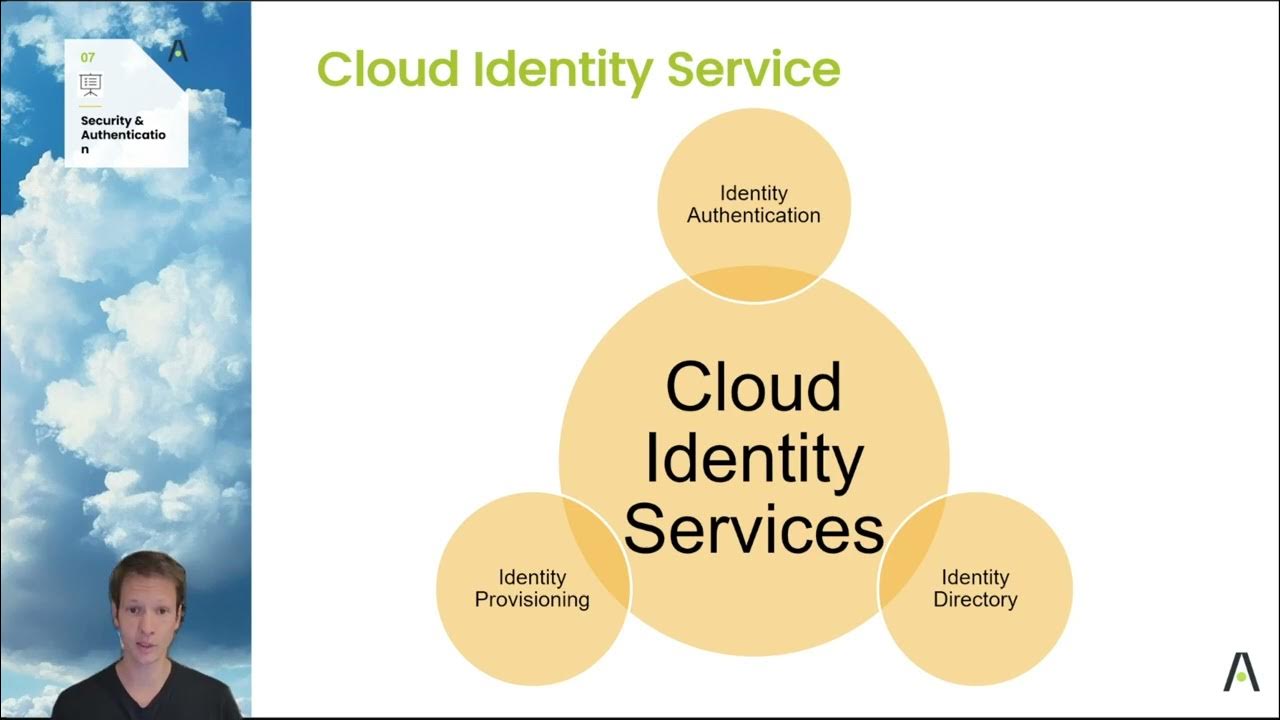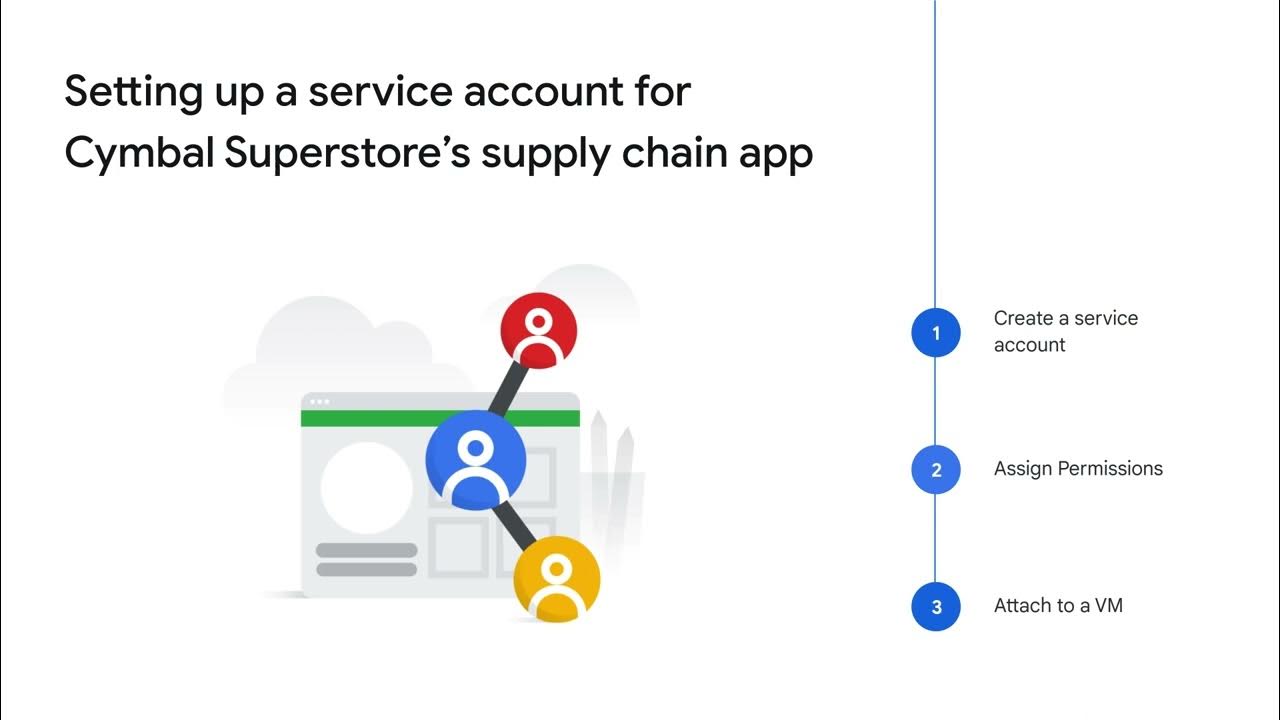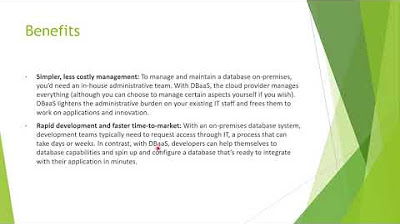Episode 31: Cloud Identity Services - Identity Directory Service
Summary
TLDRIn this video, the speaker explains how cloud identity services handle authorizations using an identity directory service. The process involves choosing between using a user store or not, with the latter relying on corporate identity providers for group mapping. By enabling the user store, the system uses Cloud Identity's authentication service and enriches claims with additional properties such as user groups. The video discusses two ways to manage authorizations: through AD/LDAP groups or Cloud Identity service user groups, offering flexibility for organizations in handling user access.
Takeaways
- 😀 Cloud Identity Service can act as a proxy or use a user store for authorizations.
- 😀 Without a user store, authorization relies on AD groups or LDAP groups from a corporate identity provider.
- 😀 The identity directory service allows mapping of claims from corporate identity providers to BTP roles.
- 😀 Enabling the user store allows for the use of Cloud Identity Service for both authentication and authorization.
- 😀 When the user store is enabled, user groups from Cloud Identity Service are used to map roles to BTP.
- 😀 Corporate identity provider is used purely for authentication when the user store is enabled.
- 😀 Using the identity directory service with a user store enriches claims from the corporate identity provider.
- 😀 User store enables more direct control over user authorizations without relying on external groups.
- 😀 Some companies may prefer to handle authorizations internally instead of using external AD or LDAP groups.
- 😀 Two options for managing authorizations in BTP: AD/LDAP groups or Cloud Identity Service user groups.
- 😀 Enabling the user store ensures more granular and integrated control over user identity and roles.
Q & A
What is the role of Cloud Identity Services in managing authorizations?
-Cloud Identity Services helps manage authorizations by using either a user store or relying on external groups (like AD or LDAP) from the corporate identity provider. This allows for the management of user roles and access within a platform like BTP.
What happens when Cloud Identity Services is configured without a user store?
-When configured without a user store, Cloud Identity Services acts as a proxy. User authorization is managed using external groups from a corporate identity provider, such as AD or LDAP groups, which are received through claims and mapped to BTP roles.
What is the significance of enabling the user store in Cloud Identity Services?
-Enabling the user store means Cloud Identity Services will manage user authentication and authorization directly. It no longer relies on external groups but instead uses its own user database and enriches claims with additional attributes, such as user groups.
How does Cloud Identity Services handle user claims when the user store is enabled?
-When the user store is enabled, Cloud Identity Services uses the corporate identity provider for authentication. After authentication, it enriches the user's claims with additional attributes, such as user groups, which can then be used for role-based access control in BTP.
What is the advantage of using Cloud Identity Services with a user store over relying on external AD/LDAP groups?
-Using Cloud Identity Services with a user store allows more direct control over user data and permissions. It also avoids reliance on external systems for authorization and enables more detailed management of user attributes, such as user groups.
What role do AD groups or LDAP groups play when a user store is not enabled in Cloud Identity Services?
-When the user store is not enabled, Cloud Identity Services relies on external AD or LDAP groups to handle authorizations. These groups are mapped to BTP roles based on the claims received from the corporate identity provider.
What happens when a user is authenticated through Cloud Identity Services with a user store?
-When a user is authenticated, Cloud Identity Services checks its user store to match the user’s identity. Upon finding a match, it enriches the authentication claims with additional user-specific attributes and user groups, which can be used for role assignments in BTP.
Can Cloud Identity Services be used as a proxy for authorizations without storing user data?
-Yes, Cloud Identity Services can act as a proxy for authorizations without storing user data. In this setup, it uses external identity providers' groups (such as AD or LDAP) to manage user authorizations.
How are authorizations mapped to BTP roles and collections in Cloud Identity Services?
-Authorizations are mapped to BTP roles and collections through either external groups (like AD/LDAP groups) or user groups stored within Cloud Identity Services. The service uses claims from the corporate identity provider and can enrich them with additional user data for more precise role assignment.
What are the two main methods of managing authorizations in BTP with Cloud Identity Services?
-The two main methods are: (1) using external AD/LDAP groups received through claims from a corporate identity provider, and (2) using user groups managed directly by Cloud Identity Services when the user store is enabled.
Outlines

Этот раздел доступен только подписчикам платных тарифов. Пожалуйста, перейдите на платный тариф для доступа.
Перейти на платный тарифMindmap

Этот раздел доступен только подписчикам платных тарифов. Пожалуйста, перейдите на платный тариф для доступа.
Перейти на платный тарифKeywords

Этот раздел доступен только подписчикам платных тарифов. Пожалуйста, перейдите на платный тариф для доступа.
Перейти на платный тарифHighlights

Этот раздел доступен только подписчикам платных тарифов. Пожалуйста, перейдите на платный тариф для доступа.
Перейти на платный тарифTranscripts

Этот раздел доступен только подписчикам платных тарифов. Пожалуйста, перейдите на платный тариф для доступа.
Перейти на платный тарифПосмотреть больше похожих видео

Episode 29: Cloud Identity Services Introduction

Episode 32: Cloud Identity Services - Strategies

EKS Pod Identity vs IRSA | Securely Connect Kubernetes Pods to AWS Services

Learn Microsoft Active Directory (ADDS) in 30mins

Managing access for Cymbal Superstore’s cloud solutions

Lect 5 - Database as a service
5.0 / 5 (0 votes)
